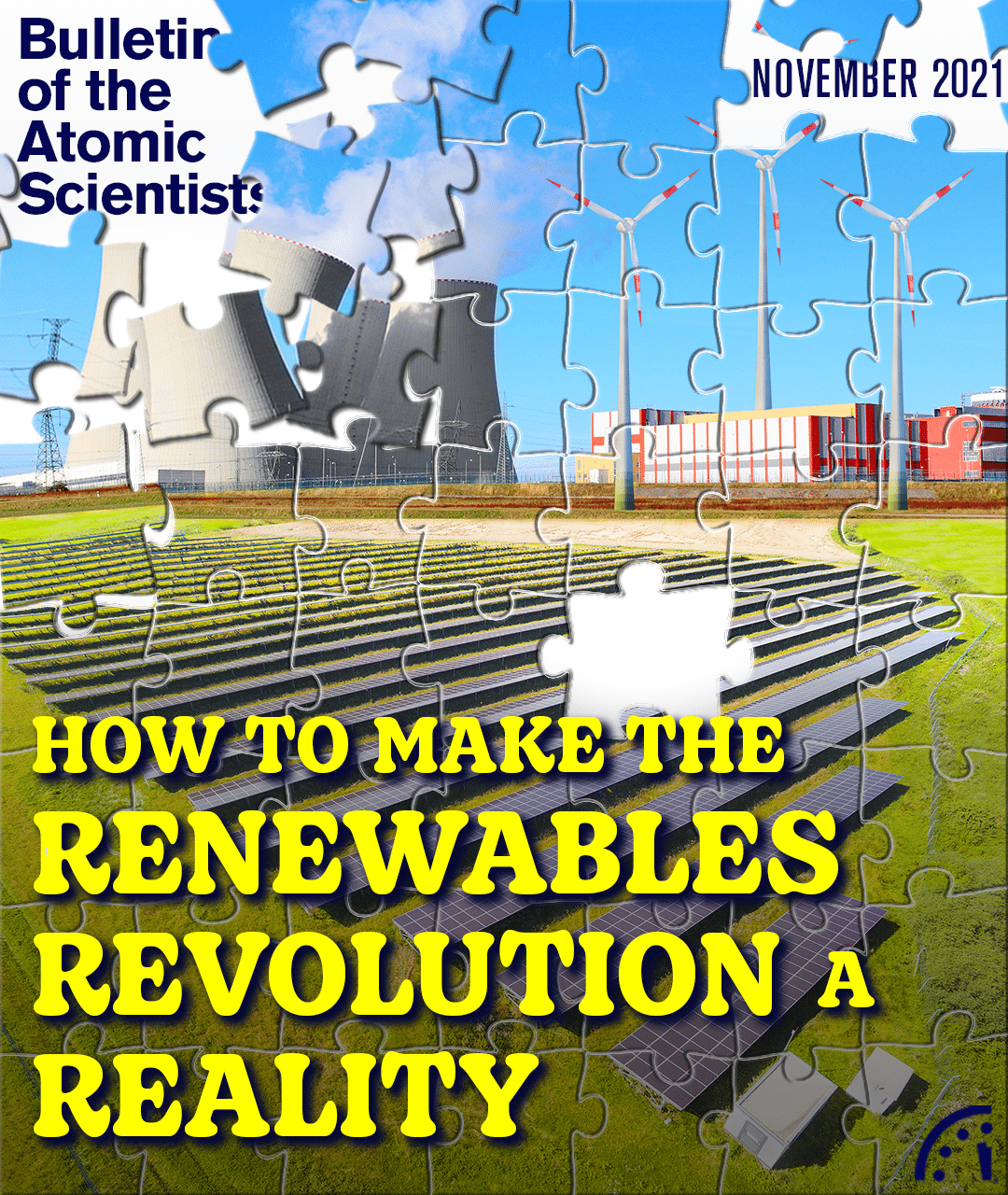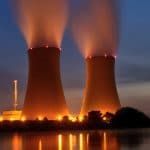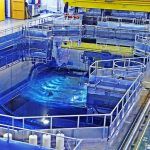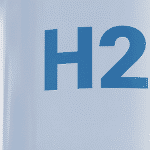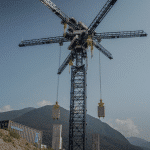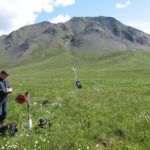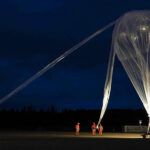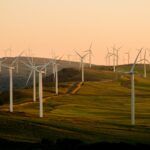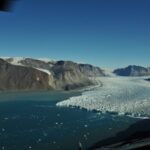Offshore wind: Poised for the big time. An interview with Anthony Kirincich
By Dan Drollette Jr | November 15, 2021
Offshore wind: Poised for the big time. An interview with Anthony Kirincich
By Dan Drollette Jr | November 15, 2021
Woods Hole Oceanographic Institution physicist Anthony Kirincich has made a specialty of studying the conditions necessary for offshore wind power to succeed in the United States and was the lead author in a new white paper on the topic. In this interview with the Bulletin’s Dan Drollette Jr., Kirincich talks about what the United States can and cannot learn from Europe, long the world leader in this form of renewable energy. He describes the difficulties that must be taken into consideration for a successful offshore wind farm and what the emergence of this form of infrastructure could mean for the US environment and the economy. He also peers into his crystal ball, speculating about what the future may hold—including, possibly, floating wind farms in the middle of the ocean.
(Editor’s note: This interview has been condensed and edited for brevity and clarity.
Dan Drollette Jr.: As a physicist, you wear a lot of hats. When someone asks you about your wind power work, what do you say?
Anthony Kirincich: For that specific hat, I tell them I’m a scientist at the Woods Hole Oceanographic Institution, where I do basic science research for this technology. As scientists, my colleagues and I act as disinterested voices, analyzing the implications of wind energy and its potential side effects. We try to understand the impacts of this new industry on the ecosystem and the continental shelf.
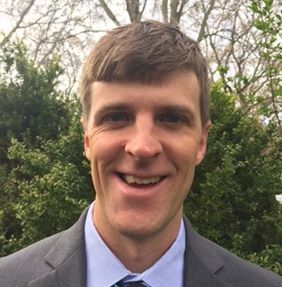
Drollette: Looking through a 50-page white paper you folks recently produced on this topic, I was amazed at just how much is involved in setting up an offshore wind farm. What are the most important factors?
Kirincich: For a fixed-bottom wind farm—which is what we will be starting off with in the United States, and what we will have for maybe the next 10 years before starting to transition to floating systems—the key thing to remember is that you’re not starting from a clean slate; there’s lots of other users of the ocean. It is a public space.
That means that conflicts arise, that are important to manage. And so, you have to make sure you’re considering all those uses properly. When you put the foundation of an offshore windfarm down, you want to make sure it’s going to be in a place where it is safe both for the foundation of the windfarm and for the environment. Usually, a foundation is a structure that is floated in and put on the bottom, and then they drive piles down to pin it into place.
So, you want to make sure there’s nothing under the sea bottom that’s going to stop that pile-driving activity, because if you get almost all the way to the bottom and then some giant boulder stops you, you have to start again.
And that’s very expensive.
From the industry’s perspective, all of these considerations equate to mitigating risk. New England has a lot of glacial erratic boulders, and so there are granite boulders out there that would stop a piledriver—so you need to know where they are.
Consequently, there’s a lot of remote sensing and mapping that needs to be done ahead of time to see what the sea bottom looks like, at very high resolutions. And that’s a lot different from the sensing used in the offshore oil and gas industries. The resolution is much different; it’s much finer and much nearer the surface of the seabed and measured in resolutions of 25 centimeters at a time. Oil and gas sensing usually goes something like 40 kilometers down below the seabed’s surface, at resolutions measured in kilometers. While we’re measuring in centimeters.
As a result, the way you sample is different.
We’re also dealing with currents, winds, waves, and any potential damage from strong extreme events. I think we like to use the phrase “extreme events” because we’re concerned about more than just hurricanes. The hurricane that just came through here a week or two ago had winds of 50 miles per hour at 200 meters above sea level, which is concerning enough. But we’ve had good, old-fashioned winter storms that get up to 90 or 100 miles per hour. And you’ve got to make sure that the windmills in your windfarm can withstand that.
And it’s also important to have a good understanding of what kind of winds you’re going to get to fuel your wind farm—the average speed of winds for next July is important information when it comes to where you site your wind farm, and how you buy and sell power. You need to know what’s coming, what winds are coming even down to an hourly basis. And that’s an important question that forecasters are still working really hard on.
Drollette: So, you’re dealing with wind, waves, and environmental factors?
Kirincich: Right. Erosion, scour, waves, how the sediment moves on the bottom, and the load that the currents put on the structures themselves—these are all the things we look at when siting a wind farm.
And to complicate things a bit, from the point of view of the physics, the wind is also a fuel—a design criteria. As are the waves, to some extent.
So someone has to do the basic science research that answers questions such as how do we do this the right way to mitigate risk? Including the risk to endangered right whales.

Drollette: It sounds like getting an offshore windmill to work is not simply a “plug-and-play” situation. In other words, you don’t just order a windmill, take it out of the box, set it up and start generating electricity. I get the impression that each time an offshore windmill is put up, it’s more of a custom-made enterprise.With that in mind, were there any surprises you ran across in doing this research?
Kirincich: Wind turbines get hit by lightning. A lot. On a flat ocean, all wind turbines are the tallest thing out there. So they get hit. Even over the plains of Oklahoma or Texas, the wind turbines are constantly getting struck by lightning.
A couple of things surprised me as well about the technology. You have to think of a wind farm as an industrial operation, just like a big power plant except that it’s distributed out to sea. And speaking as a scientist, I have to say that I hadn’t appreciated the innate conservativeness of any industry when it comes to moving into new ideas and new technologies. Now, I understand how much is driven by their bottom line, and their need to appease their bankers at the end of the day.
I can understand where that’s coming from: You’re growing an entirely new commercial sector from scratch, in a way that hasn’t been done before. We’re not just simply porting over European technology, shipping over European workers, having them do the work, and then having them go back home with no gain to the US economy from a worker’s perspective. We actually have new industries growing up in the US to support this: port facilities, shipping, maintenance, as well as the training of an entirely new field of specialist workers. I hadn’t really appreciated how much was involved, from the tip of the topmost windmill blades to below the pile.
The other thing I observed from interacting over the years with the various players—such as developers, environmental nonprofit groups, and state agencies—is that this industry really doesn’t fall into the typical classic us-versus-them, David-and-Goliath battle. Because the basic premise of the companies involved in offshore wind is that they want to do something beneficial for the climate. So, in a way, they’re kind of already sitting on the same side of the table as the environmental NGOs.
That didn’t fit the popular preconceptions about business; I’d see processes moving forward that might be stopped in some other industry, because the wind energy developers would voluntarily say: “We don’t want to hit any whales. Let’s lower our vessel speeds to 10 knots, and then we’ll put these buoys in the water so we don’t hit them.” They’re a bit more proactive, I think, in mitigating some environmental issues.
Drollette: You mentioned in passing that we can’t just import this technology willy-nilly from Europe. To me, as an outsider, I would have thought: “They’ve been building and running windmills off the coast of Denmark for 25 years. Why can’t we just haul that stuff over here, and away we go?”
Kirincich: Conditions are different here. We have a continental shelf to deal with, we have right whales, we have hurricanes, we have winter storms. They don’t have those things there in Europe. So, you can’t just buy a wind turbine from Siemens, plunk it down in Block Island Sound or [Martha’s] Vineyard Sound, and flick a switch.
Everything that we do in the US is standing on the shoulders of what the Europeans have done. Without question. They have expertise in the actual equipment, understanding how to make an offshore wind farm happen, what surveys and observations you need to make beforehand. … But then you add the nuances of the ocean environment that we have, the continental shelf, the boulders, and the shallowness of the waters. And our ratepayers are different than their ratepayers, and they want different things.
It all adds that much more complication to the design, and to the construction operations.
And our regulatory environment is completely different than theirs, so there are different hoops to jump through for a project when it comes to the different phases of data collection, approvals, and construction. And the ocean environment is different enough here that you have to stop and make sure that everything you’re porting over is going to work as intended. There’s a steep learning curve—even for the European engineers that are coming over from Denmark. They’re having to navigate differently here than they might have in Europe.
Drollette: So, did the Block Island experimental wind farm[1] help in that regard?
Kirincich: I think so, absolutely. Anyone in the industry will tell you that actually getting steel in the water is a big plus; it proves a thing can be done.[2]
I think that we learned a lot as an industry from Block—certainly in terms of understanding the wind as fuel, and the design criteria, and the regulatory hurtles to overcome.
In addition, at Block Island they spent a lot of time and money on doing environmental sampling that they may not have needed to do, in hindsight. But they didn’t know that at the time.
And that’s the nature of the beast; in the first couple of projects, you’re going to spend more time and money taking data because no one’s quite sure what data will prove to be the most important data. You’re not sure what you need to know, so you have to overfill. Especially when going from the five windmills of that experimental offshore wind farm of Block Island to the 62 of Vineyard Wind—and another 130 windmills they’re planning for Vineyard Winds South.
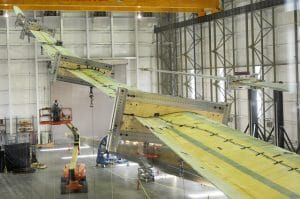
Drollette: What else?
Kirincich: When it comes to offshore wind farms, things are big. Turbine blades are big, the posts that support them are big. You need a place to put these before you install them, so it becomes crucial to find big fields of “lay down space” on the East Coast, where you can ship these things in from the factory and set them down while you’re waiting to go install them. The size of the available ports and infrastructure becomes really important when you talk about scaling this industry up in a meaningful way. I mean, you can find lay down space relatively easily when you’re dealing with only five windmills that need to be installed offshore—but can you do it for 5,000? Because that’s roughly the scale of the Biden administration goal.
Along those same lines, there’s a lot of new businesses starting up to handle all this construction, a lot of companies are transitioning up here from the oil industry in the Gulf of Mexico or Florida. All of these marine services are kind of a growth area that people are really starting to explore now, in areas as esoteric as autonomous submarine-based bottom surveys, which I read about in a CNBC article.[3] I was in the office today and heard that that California-based startup company was actually on campus doing a tour. And it caught my eye, because we do that at Woods Hole pretty well for science; after all, we’re the home of deep-sea manned research submersibles such as ALVIN, vessels which have gone to the bottom of the Marianas Trench—the deepest part of the entire ocean.
Offshore wind is really kind of an ideal space for entrepreneurs to come in and say, “Hey, I think I have a piece of technology that can help. How do I move into offshore wind?” I think there will be a lot of that in the next decade.
Drollette: Speaking of which, where do you see things going in the near-future?
Kirincich: Right now, everyone is focused on fixed-bottom offshore wind turbines—windmills which are planted on the seafloor. That’s because these are the ones that are most economically viable right now, which is why you see fixed-bottom offshore wind turbines in the proposals for every offshore windfarm lease area. But if you do the math on how much energy we would need from wind on a nationwide level to make a dent in our national fossil-fueled electricity generation, we can’t just stick to the buildable shallows. In this part of the New England coast, we were fortunate enough to happen to be in an area that has the ideal conditions of a shallow continental shelf, windy conditions, and large population areas. But not every locale has that.
For example, Maine has even more wind, but it has got much rockier, much deeper waters. California has a lot of wind and a huge market, but mostly really deep water. To tap those markets you almost assuredly will have to do floating systems, where the offshore wind farm is not fixed to the bottom but on the water’s surface.
So, I think floating windfarms will be the next thing on the horizon.[4] People at places like the US Energy Department are starting to prepare the floating windmill technology so that it becomes economically viable and starts to push the unit price—the cost per kilowatt-hour—down.
Looking even farther ahead, there are other, even more ambitious projects that researchers are thinking about. For example, we could start harvesting the wind in the middle of the ocean where it’s super windy, and there are no use conflicts.
And so, the US Energy Department has a couple of projects looking into this. They’re looking into really massive wind turbines that are on a floating structure that’s autonomous, and it’s harnessing the energy from the wind and the currents underneath. These would be massive, massive structures, called “wind rangers” by researchers, and are being considered, for far, far out at sea. And because these would be too far away to have an electrical umbilical cord transferring the electricity you harvest, they’d have to be storing the energy in a way that’s useful, such as storing it in a battery. Or you could actually run a process—such as generating ammonia—that takes the energy right away and creates a product you could store on-site and haul away for use later.
It all sounds like science fiction, but that’s where the long-term future of offshore wind is likely to be: Wind farms located so far offshore they’re practically mid-ocean.
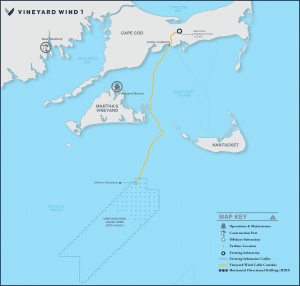
Drollette: Getting back to the immediate here and now, what about the public perception of offshore windmills? I asked someone about it on Martha’s Vineyard—and Vineyard Sound is where the first large, utility-scale, commercial windfarms are going to be, with their 192 windmills—and she replied: “People here are very conservative. They like their views. So, they don’t like this idea.”
So, will folks on the island of Martha’s Vineyard be able to see these offshore windmills when they’re completed? Because public resistance to spoiling the view was what torpedoed the previous large-scale effort, known as Cape Wind. That one was planned to be only three miles off of Hyannisport on Cape Cod—the Massachusetts mainland.[5]
Kirincich: It’s pretty unlikely that you’d see it. The Vineyard Wind offshore wind farm is going to be about 15 nautical miles out to sea from Martha’s Vineyard. That’s pretty far out—about 35 kilometers. To see its windmills, you’d first have to be at the absolute nearest point on the island of Martha’s Vineyard to the wind farm, on the south side of an island that is itself seven miles off the mainland.
My understanding is that engineers have done some viewshed simulations as part of their construction and operation plans, and they found that if you were located at a spot like that on Martha’s Vineyard, on a cold clear day with ideal atmospheric conditions and no haze, then someone might see windmills on the horizon. So, I think there’s a chance at seeing something out there under perfect conditions, but from 15 nautical miles away they’re going to be very small. And don’t forget that you have this 180-degree viewshed, so whatever you might see would be in a very narrow area on the horizon.
In addition, the south coast of Martha’s Vineyard is much more lightly populated than the Hyannisport area of Cape Cod.
And let’s not forget that at the beginning of the Block Island experimental wind farm, there was initially a lot of resistance to that project. But people in Block Island grew to accept it; for one thing, they got a really good deal out of this, because they got an underwater power cable that finally linked them to the mainland. Before that, they had their own diesel generators, which were subject to local problems with the power supply.
Now that’s all behind them, and they have grid power. That in itself has been a welcome change for them.
So, I think that when a large commercial offshore windfarm is erected in Vineyard Sound, we’ll see much the same thing. Once the actual building of it is over, people will be saying, “You know, it actually wasn’t that big a deal. Who cares?”—just like what happened at Block Island.
I think it all comes down to an attitude of “not in my backyard.” That’s always the case with a new thing. Most people are very resistant to change, until they realize that it wasn’t a big deal.
Endnotes
[1] See “Tilting toward windmills” https://thebulletin.org/tilting-toward-windmills/
[2] See “Senator ‘It’s Time to Wake Up’ Whitehouse drops his climate mic” https://thebulletin.org/2021/03/senator-its-time-to-wake-up-whitehouse-drops-his-climate-change-mic/
[3] See “These electric submarines map the seafloor to make way for wind power” https://www.cnbc.com/2021/08/19/these-electric-submarines-map-the-seafloor-to-make-way-for-wind-power.html
[4] See “ Offshore Wind Farms See Promise in Platforms That Float” https://www.nytimes.com/2016/09/30/business/energy-environment/offshore-wind-farms-see-promise-in-platforms-that-f.html
[5] See “Cape Wind: Money, Celebrity, Energy, Class, Politics, and the Battle for our Energy Future” https://wendywilliamsauthor.com/product/cape-wind
Together, we make the world safer.
The Bulletin elevates expert voices above the noise. But as an independent nonprofit organization, our operations depend on the support of readers like you. Help us continue to deliver quality journalism that holds leaders accountable. Your support of our work at any level is important. In return, we promise our coverage will be understandable, influential, vigilant, solution-oriented, and fair-minded. Together we can make a difference.
Keywords: Anthony Kirincich, climate policy, electrical grid, energy, green economy, infrastructure, renewables, smart grid, wind turbine, windfarm, windmill
Topics: Climate Change

